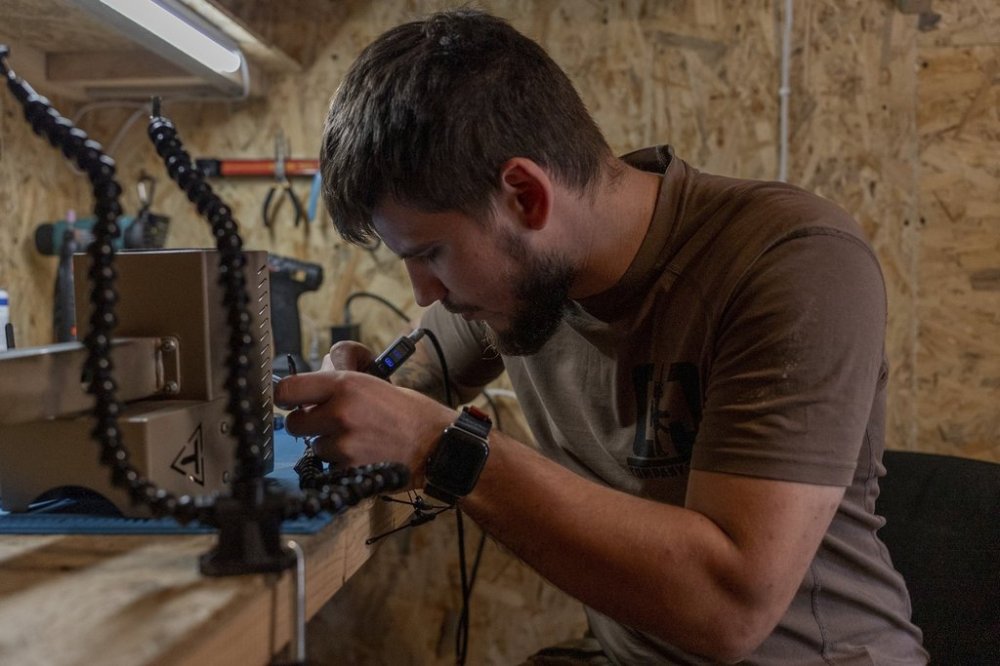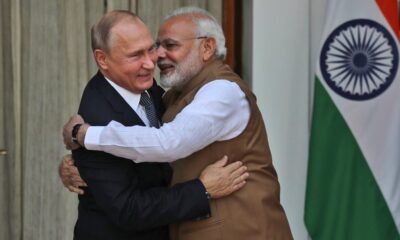World
Ukraine Deploys Remote-Controlled Vehicles to Protect Troops

In the ongoing conflict in Ukraine, military forces are increasingly utilizing remote-controlled armored vehicles to carry out dangerous missions, shielding soldiers from potential harm. With the battlefield heavily populated by Russian drones, these vehicles, dubbed “robots on wheels,” are becoming essential tools for the Ukrainian army.
The rise in the use of these vehicles comes as Ukraine faces a significant shortage of personnel in a war that has persisted for more than three and a half years. The armored vehicles are capable of performing various tasks, including transporting supplies, clearing mines, and evacuating casualties. According to a platoon commander from the 20th Lyubart Brigade, who goes by the call sign Miami, “It cannot fully replace people… but for a human it’s (sometimes) far too dangerous.”
These robotic vehicles, primarily produced by Ukrainian manufacturers, vary in cost from approximately $1,000 to $64,000, depending on their size and technological capabilities. While the use of remote-controlled vehicles is not a novel concept in warfare—dating back to the German army’s Goliath in World War II—Ukraine’s extensive deployment is noteworthy and may push advancements in their technology, according to Ben Barry, a fellow at the International Institute for Strategic Studies.
The Russian army also employs similar technology, indicating a trend in modern warfare. Miami, who joined the army on the first day of Russia’s full-scale invasion in February 2022, reflects on his journey from an infantryman to a drone operator. He acknowledges that the nature of war has evolved, stating, “I couldn’t even imagine that I would become a (drone) pilot… war is progress, and we cannot stand aside.”
Innovative Solutions for Battlefield Challenges
The robotic vehicles utilized by Miami’s team are designed to operate in rugged terrains, painted in military colors, and equipped to navigate areas that are hazardous for human soldiers. Miami notes, “They arrive in one condition, and we improve them,” emphasizing the ongoing enhancements made to adapt to Russia’s electronic warfare tactics.
Currently, Miami’s ten-person team is integrating these robotic vehicles into their operations, primarily using them for logistical support to deliver food and ammunition to front-line soldiers. Another soldier in the unit, known as Akim, echoes the growing reliance on these machines, highlighting their potential: “When FPV drones first appeared, they weren’t popular, but those who pioneered them now show (the best) results.”
Before deploying a remote-controlled vehicle, Akim uses a drone to scout the route for obstacles or mines. Operating from a basement in Kostiantynivka, located less than 10 kilometers from the front lines, he is well aware of the dangers surrounding him, hearing the sounds of artillery and drones overhead. Once a bustling city, Kostiantynivka is now largely deserted, with its buildings scarred by conflict.
By utilizing drones and robotic vehicles, Ukrainian soldiers can conduct operations with reduced risk. Akim remarks, “Every time a drone or a robot does something, it means one of our fighters doesn’t have to.” The vehicles can carry substantial loads—up to 200 kilograms (440 pounds)—and operate tirelessly, enhancing operational efficiency.
Addressing Vulnerabilities and Costs
Despite their advantages, robotic vehicles face challenges on the battlefield. Their slower speeds, typically around six kilometers per hour, make them vulnerable targets. Miami explains, “That’s why we haven’t evacuated many wounded (on these vehicles). Some refuse to leave because it’s dangerous.” Additionally, the cost of these vehicles poses financial strain, averaging around 400,000 hryvnias ($9,700). Miami notes that while this is not exorbitant, the expenses can accumulate quickly if multiple units are damaged or destroyed in a week.
To mitigate risks, Miami and his team are creatively enhancing the vehicles’ defenses. They have experimented with welding protective cages and attaching metallic rollers to detect mines in advance. The war continues to provide valuable feedback, which is being incorporated into the design of newer models.
As Ukraine’s military adapts to evolving threats, the innovative use of remote-controlled vehicles is likely to play an increasingly important role in their strategy. With the ongoing conflict, these technological advancements not only protect Ukrainian soldiers but also represent a significant shift in the nature of modern warfare.
-

 Politics4 weeks ago
Politics4 weeks agoSecwepemc First Nation Seeks Aboriginal Title Over Kamloops Area
-

 World5 months ago
World5 months agoScientists Unearth Ancient Antarctic Ice to Unlock Climate Secrets
-

 Entertainment5 months ago
Entertainment5 months agoTrump and McCormick to Announce $70 Billion Energy Investments
-

 Science5 months ago
Science5 months agoFour Astronauts Return to Earth After International Space Station Mission
-

 Lifestyle5 months ago
Lifestyle5 months agoTransLink Launches Food Truck Program to Boost Revenue in Vancouver
-

 Technology3 months ago
Technology3 months agoApple Notes Enhances Functionality with Markdown Support in macOS 26
-

 Lifestyle3 months ago
Lifestyle3 months agoManitoba’s Burger Champion Shines Again Amid Dining Innovations
-

 Top Stories2 months ago
Top Stories2 months agoUrgent Update: Fatal Crash on Highway 99 Claims Life of Pitt Meadows Man
-

 Politics4 months ago
Politics4 months agoUkrainian Tennis Star Elina Svitolina Faces Death Threats Online
-

 Sports5 months ago
Sports5 months agoSearch Underway for Missing Hunter Amid Hokkaido Bear Emergency
-

 Politics5 months ago
Politics5 months agoCarney Engages First Nations Leaders at Development Law Summit
-

 Technology5 months ago
Technology5 months agoFrosthaven Launches Early Access on July 31, 2025





















